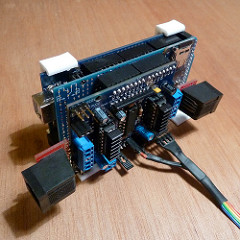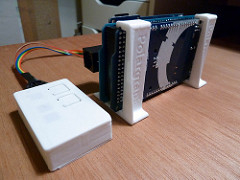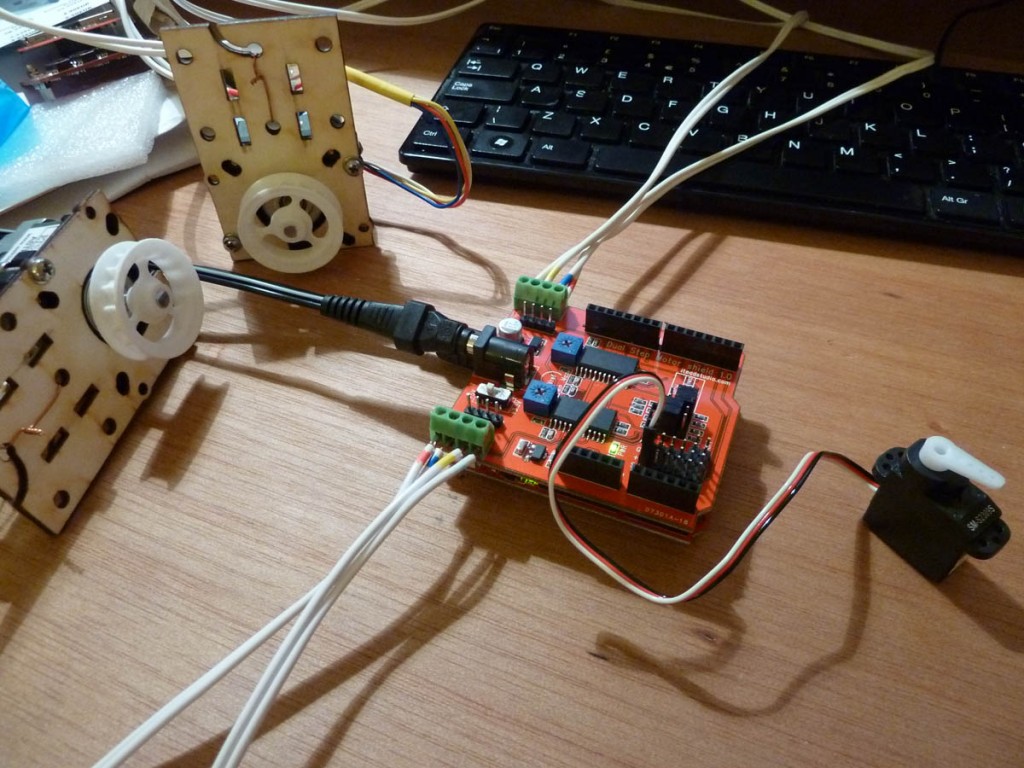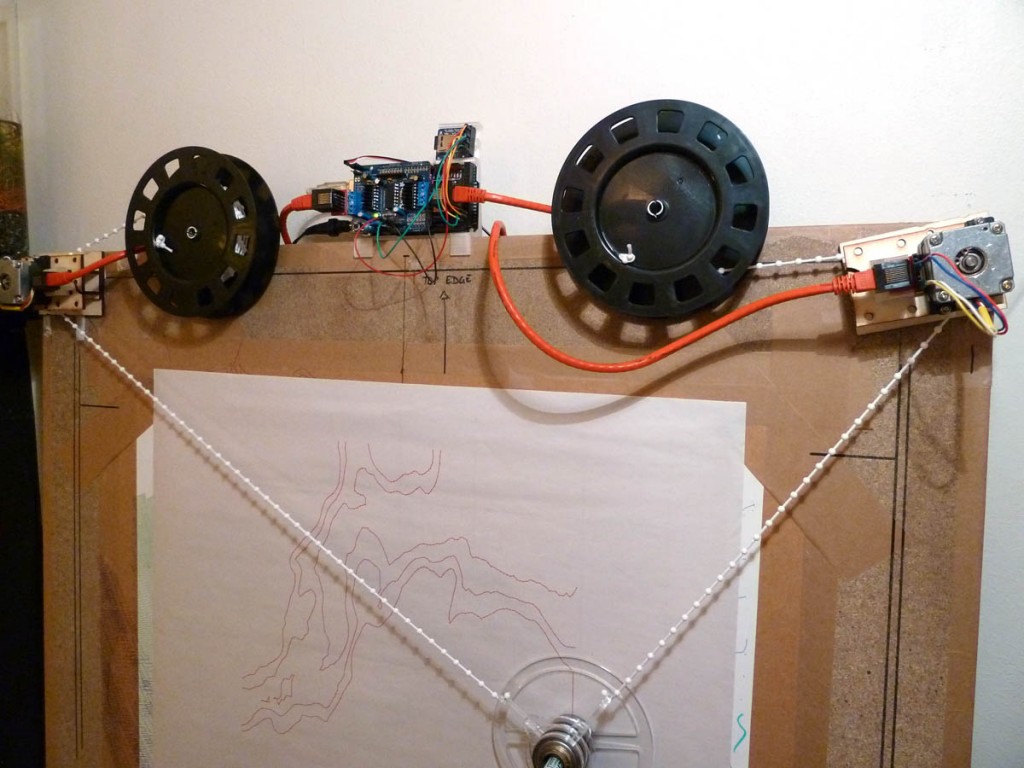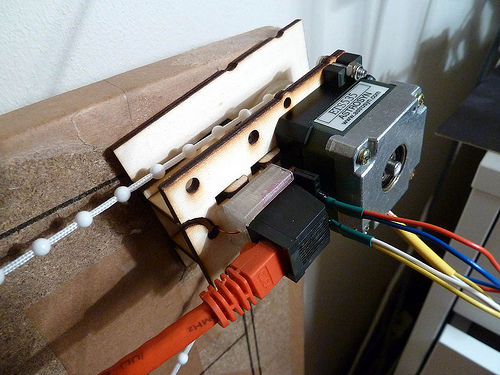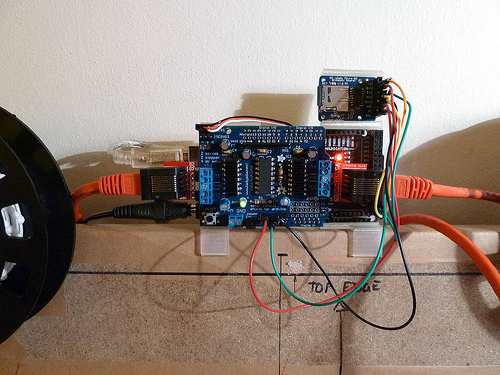Pre-order Polargraph SD machines!
I’ve opened a little shopfront – polargraph.bigcartel.com – and am taking pre-orders for the first round of Polargraph SD machines, as well as orders for the regular machines.
The pre-orders are offered at a significant discount (will be something like 20 or 25%), because you’ll have to wait until June to get them – not finished designing them yet you see, but I know more-or-less what they’ll be like. And that is:
- MEGA-based, so plenty of memory for future software expansion.
- Tethered (USB) OR standalone drawing.
- I/O pins broken out so usable by home-brew hacks (eg bluetooth).
- Useful hardware interface for standalone drawing. At the very least this will be a neater version of the machine featured previously on this blog, but it will hopefully be something a little more sophisticated…
- The level of “custom” will depend on number of orders, from a hand-soldered prototype shield to a specially made PCB, but will be made to a high standard.
- There might be enhancements to the gondola and the brackets and things too, depending on how much money I have to work on prototypes.
- And all the same stuff as you’d find in a regular polargraph kit (gondola, brackets, motors, sprockets, cord, cables, psu, servo).
I will be finalising the design during April, and sourcing and assembly during May. The pre-order price will last until the end of April.
Those of you who are interested in just the extras (the shield – in whatever form it takes), I can’t give a price for that until I’ve figured it out. I’ll be publishing plans and build instructions in due course, but if there’s any fancy bits that aren’t trivial to put together (PCBs or something), I’ll keep some to one side for those of you who have expressed an interest.
Regular polargraphs too?!
Yes, I’ve got parts to make up a bunch of regular polargraph kits too. These don’t need any further development, so will be ready to ship in about two weeks from order date. And parts kits.
Sandy, you are slower than a donkey, hey!
I want to do it properly since this is a fair bit more involved than previous rounds, and I owe it to you all to be professional about it – and if that means taking a little more time to make sure it’s as good as it can be, then so be it. I’d prefer that than to deliver a bunch of sub-standard collections of parts. If it looks like it’s going to take very much longer, then I’ll be in touch, and of course you can get your money back then if you don’t want to wait.


